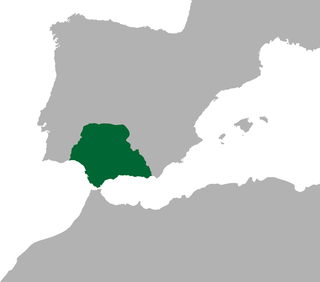The gens Artoria was a minor plebeian family at ancient Rome. Few members of this gens are mentioned in history, but a number are known from inscriptions. Under the later Empire at least some of them were of senatorial rank.
The gens Acutia was a minor plebeian family at Ancient Rome. Members of this gens are mentioned from the early Republic to imperial times. The first of the Acutii to achieve prominence was Marcus Acutius, tribune of the plebs in 401 BC.

The gens Mutia was an obscure plebeian family at Rome. None of its members is known to have held any magistracy, but many are known from inscriptions, including a large number of freedmen.
The gens Occia was a minor plebeian family at Rome. Members of this gens are first mentioned under Tiberius, but must have been at Rome for much longer; for Tacitus speaks of Occia, a Vestal Virgin who died in AD 19, after serving faithfully for fifty-seven years. A few of the Occii pursued political careers in this period, but most are known only from inscriptions.
The gens Oclatia was an obscure plebeian family at Rome. The only member known to have held any magistracy is Gaius Oclatius Modestus, quaestor in the first half of the second century, but many Oclatii are known from inscriptions.
The gens Ovidia was a plebeian family of ancient Rome. Only a few members of this gens are mentioned in history, of whom the most famous is unquestionably the poet Publius Ovidius Naso, but others are known from inscriptions.
The gens Pescennia was a plebeian family at ancient Rome. Members of this gens are first mentioned in the time of Cicero, but it was not until imperial times that they came to prominence. The Pescennii were of equestrian rank. The most illustrious of the family was Gaius Pescennius Niger, an able general, who was proclaimed emperor in AD 193, only to be defeated and put to death by Septimius Severus the following year.
The gens Plinia was a plebeian family at ancient Rome. Few members of this gens are mentioned in history, and the Plinii are best known from the scholar and antiquarian, Gaius Plinius Secundus, author of the Historia Naturalis, who lived during the first century AD.
The gens Quartinia was an obscure plebeian family at ancient Rome. Few members of this gens are mentioned in history, but a number are known from inscriptions.
The gens Quartia was an obscure plebeian family at ancient Rome. No members of this gens appear in history, but several are known from inscriptions.
The gens Praecilia or Precilia, also written as Praecillia or Precillia, was an obscure plebeian family at ancient Rome. Few members of this gens are mentioned in history, but a number are known from inscriptions.
The gens Rammia was an obscure plebeian family at ancient Rome. Members of this gens are first mentioned in the period leading to the Third Macedonian War, but no Rammius attained a position of importance in the Roman state until Quintus Rammius Martialis, governor of Egypt early in the second century AD.
The gens Bellia, also written Billia and Bilia, was an obscure plebeian family at ancient Rome. No members of this gens are mentioned in history, but several are known from inscriptions.
The gens Romania was an obscure plebeian family at ancient Rome. No members of this gens appear in history, but many are known from inscriptions.
The gens Safinia was a minor plebeian family at ancient Rome. Few members of this gens are mentioned in history, but a number are known from inscriptions.
The gens Sattia was an obscure plebeian family of senatorial rank at ancient Rome. Members of this gens are known from the final century of the Republic to the time of Diocletian, but few of them held any of the higher offices of the Roman state.
The gens Seccia, Secia, or Siccia was a minor plebeian family at ancient Rome. Few members of this gens occur in history, but a number are known from inscriptions. The best known members include Lucius Siccius Dentatus, who won martial fame in the fifth century BC, and Gaius Secius Campanus suffect consul under Domitian.
The gens Secundia was an obscure plebeian family at ancient Rome. This gens is known almost entirely from inscriptions, as none of its members held any of the higher offices of the Roman state.
The gens Sellia or Selia was an obscure plebeian family at ancient Rome. Members of this gens are mentioned in the time of Cicero, but none of them attained any of the higher offices of the Roman state.
The gens Sennia was an obscure plebeian family at ancient Rome. Few members of this gens are mentioned in history, but others are known from inscriptions.










